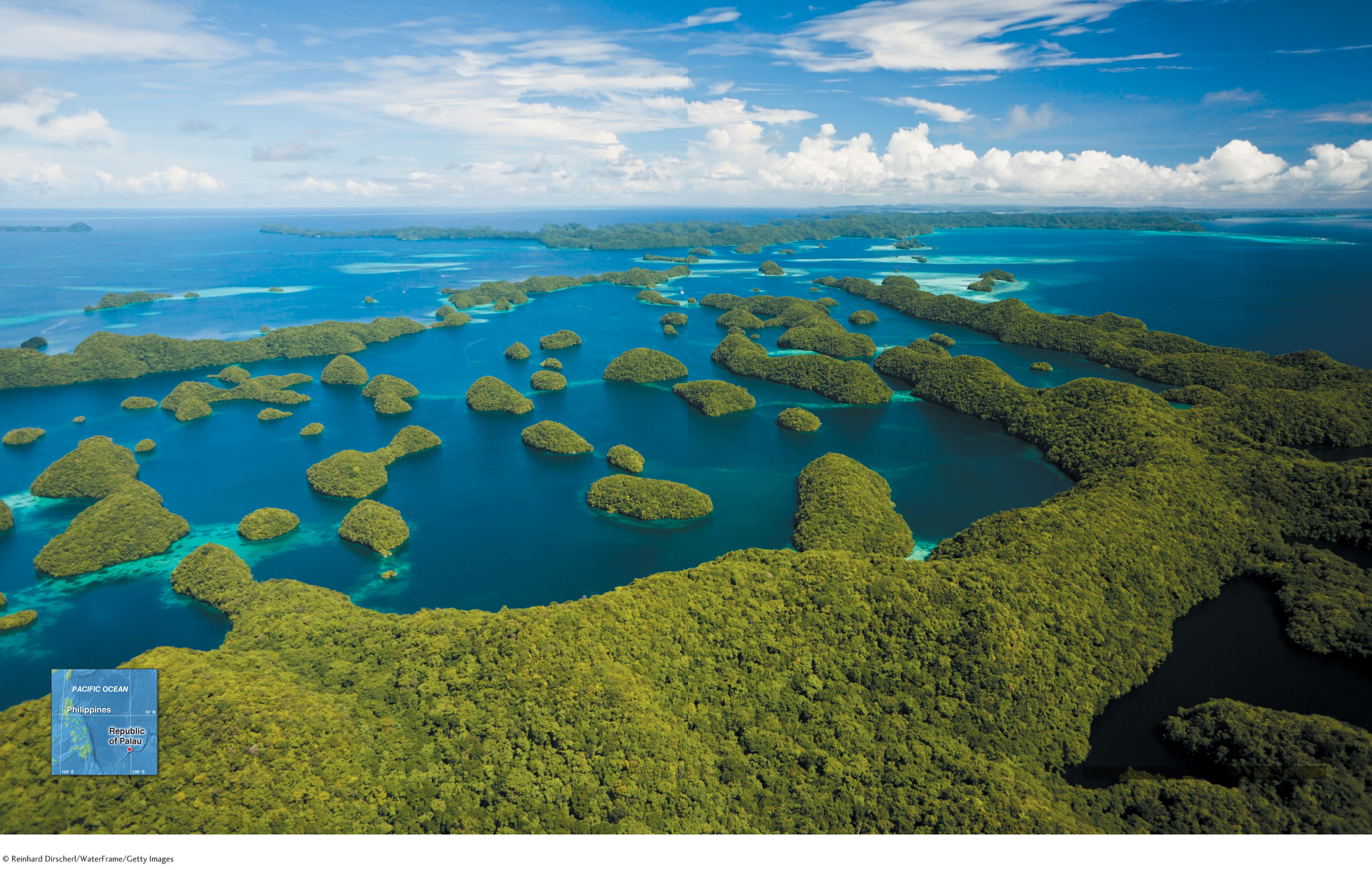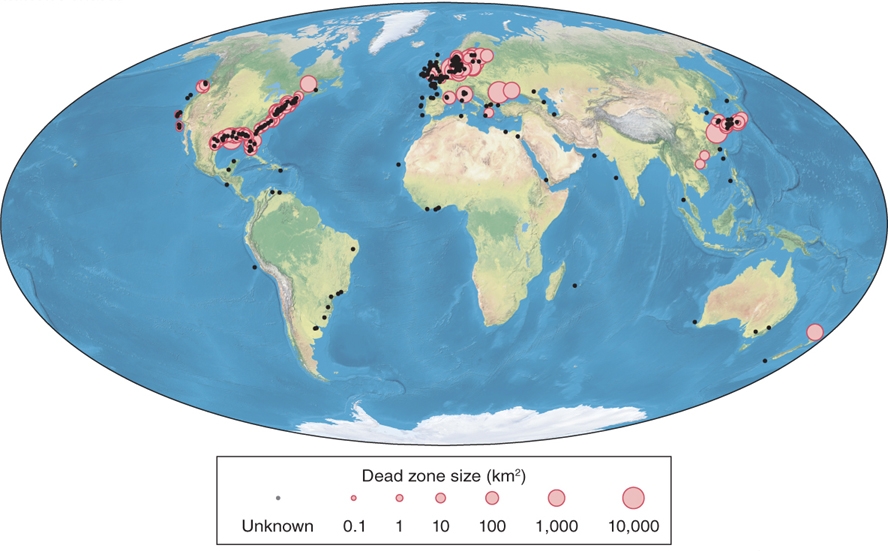THE LIVING HYDROSPHERE: Ocean Ecosystems
10

LIVING PHYSICAL GEOGRAPHY
How deep are the oceans?
Why are the oceans salty?
Why do most deep-
sea organisms glow? What is the Great Pacific Garbage Patch?
THE BIG PICTURE
Ocean ecosystems range from tropical coral reefs to dark and frigid deep-
LEARNING GOALS
After reading this chapter, you will be able to:
10.1
Discern the major physical features of the oceans.
10.2
Describe the ecosystems along continental margins and human influences on those ecosystems.
10.3
Explain how polar marine ecosystems function.
10.4
Describe the geographic patterns of life in the open ocean.
10.5
Assess the environmental impact of and remedies for plastic pollution in the oceans.
THE HUMAN SPHERE:
Coastal Dead Zones
COASTAL DEAD ZONES are areas in coastal waters where there is too little dissolved oxygen to support most forms of marine life. Coastal dead zones are a natural phenomenon, but human activity has increased both their numbers and their geographic extent in recent decades. Dead zones are now occurring in areas where they were not found before (Figure 10.1).

Anthropogenic dead zones are closely tied to agriculture. Dead zones form or increase in size as fertilizers, applied in excess to agricultural fields, are carried into streams by rainfall runoff. The streams carry the fertilizers to the coastal areas. There they fertilize phytoplankton (see Section 10.3), creating explosive phytoplankton growth. After the phytoplankton die, they settle into deep water, where microbes decompose their remains. The process of decomposition removes dissolved oxygen from the water, creating a dead zone. Most marine life asphyxiates when it enters these anoxic (oxygen-
This chapter explores the oceans and emphasizes the human influences on them. We first examine the physical characteristics of the world’s oceans. Next, we explore life along the continental margins, in polar waters, and in the open ocean. Finally, we examine the growing problem of plastic debris in the world’s oceans.